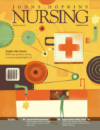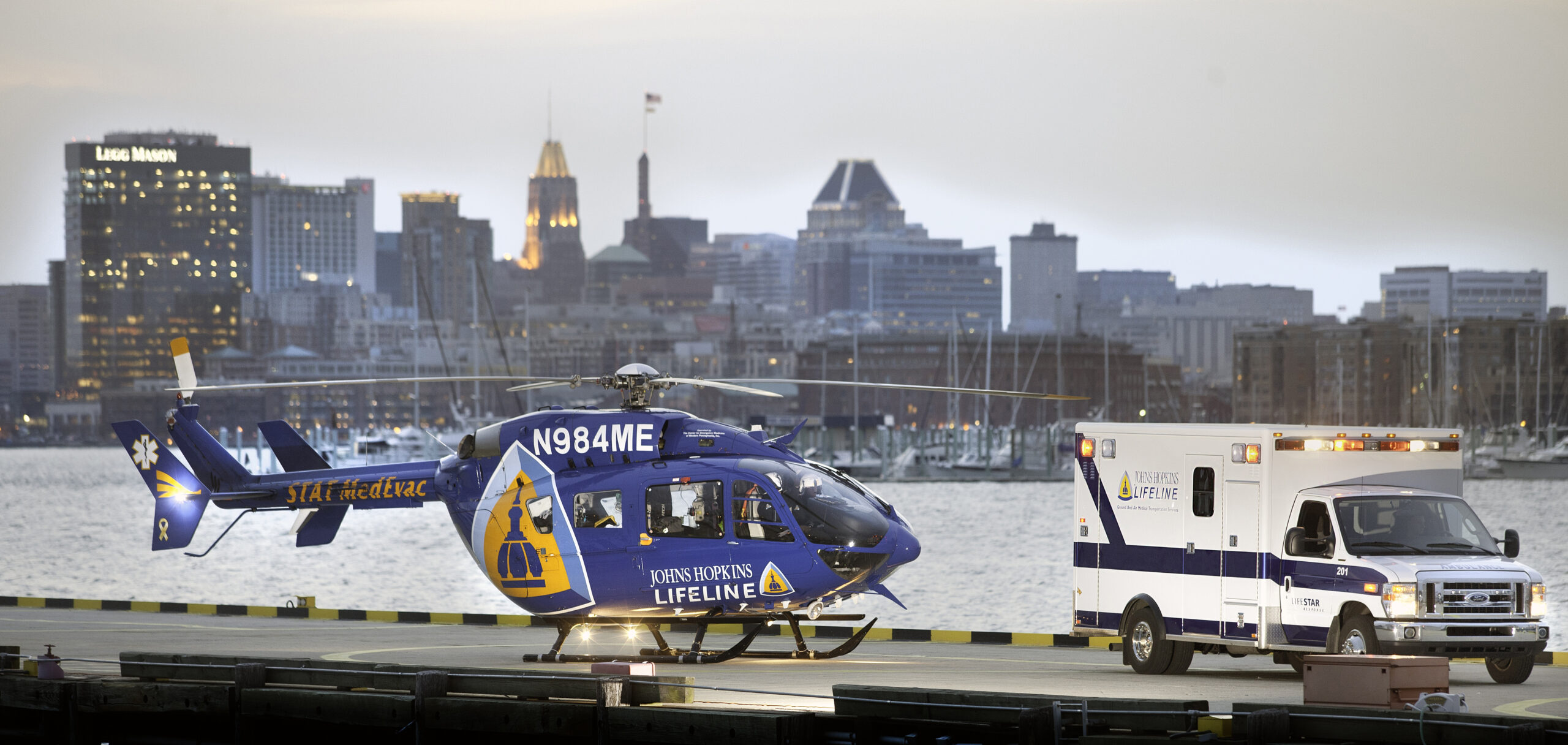A former volunteer ambulance dispatcher and paramedic, Scott Newton, RN, CCRN, EMT-P, knows a transportation issue when he hears it. The cool part for the DNP student is that now he gets to work on fixing it.
Johns Hopkins Hospital has access to helicopters, ambulances, and airplanes strategically positioned throughout the region to transport patients during emergencies. It is the responsibility of Newton, assistant director of nursing at Johns Hopkins Lifeline, and his crew of clinical experts to sound the alarm over barriers to tertiary care and get rolling on ways to remove them. For Newton, it is the next step in a transportation career that began 26 years ago with that dispatcher gig.
“I have seen the barriers and complexities of communicating between hospitals while transporting patients by ambulance or helicopter to tertiary care under time-sensitive conditions,” Newton says. The idea is to develop “a ‘one-stop shop’ and simple system” that will make it easier for patients and emergency teams alike.
“This is right up Scott’s alley,” says DNP program Director Mary Terhaar, DNSc, CNS, RN. “It’s about more than keeping the trains running on time, which of course is essential. But Scott never forgets that there’s a human being on the other end of that helicopter ride.”
Within the past two years, since internal changes were made at Hopkins, there has been a 16 percent growth in successful emergency transfers. Newton knows more improvement is always possible, but he’s up for the challenge. “Patients are counting on us to get it right.”

